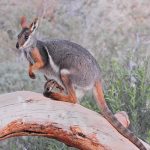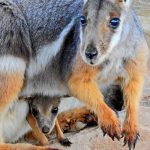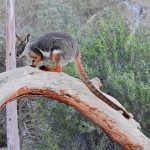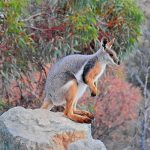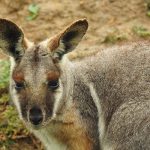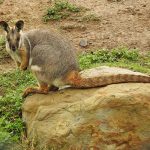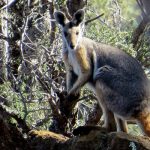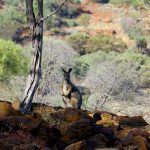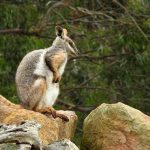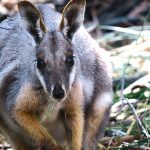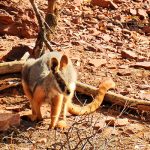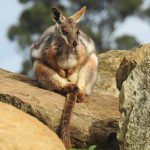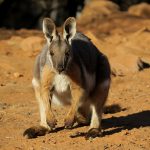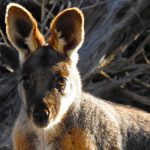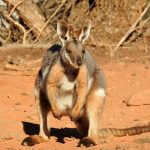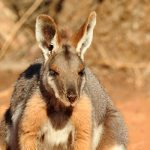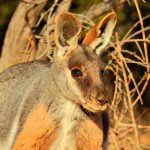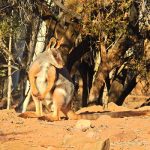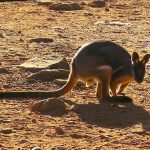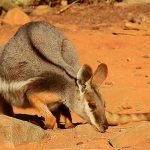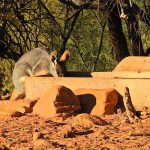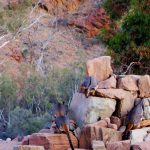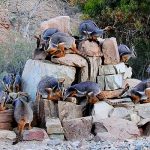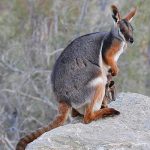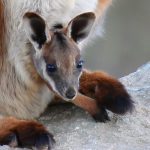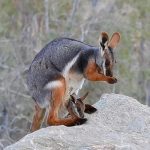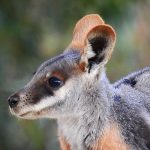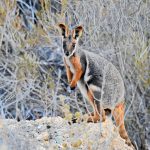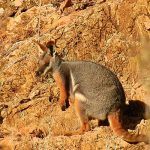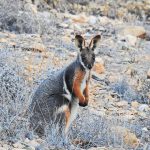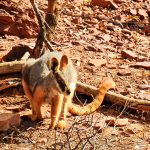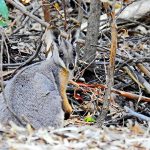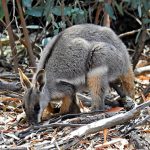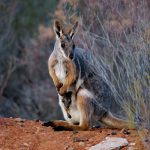YELLOW-FOOTED ROCK-WALLABY
The Yellow-footed Rock-wallaby: Leaping Jewels of Australia’s Rugged Heart
High among the sun-baked cliffs and ancient rocky outcrops of Australia’s semi-arid heart, a remarkable creature moves with breath-taking grace. The Yellow-footed rock-wallaby is a true marvel of adaptation, its vibrant colours and nimble leaps painting a story of survival and resilience amidst some of the continent’s harshest landscapes.
Where Do Yellow-footed Rock-wallabies Live?
The home of the Yellow-footed rock-wallaby is as dramatic as the animal itself. Imagine towering escarpments and labyrinthine gorges:
| Region | Location |
|---|---|
| East & West Flinders Ranges | South Australia |
| Gap & Coturaundee Ranges | New South Wales |
| Isolated Outcrops | South-west Queensland |
In these craggy realms, every stone and shadow offers shelter—a fortress against predators and the elements.
A Coat of Many Colours
Picture a dawn sun illuminating a wallaby perched on a ledge:
- Grey and brown fur: Offers camouflage among the rocks.
- Splashes of white and yellow: Adorn their cheeks, sides, and limbs, catching the sun’s rays.
- Striking yellow and black tail: Bands of colour that help with balance and communication.
As you watch, the wallaby’s coat seems almost to flicker between light and shadow, blending perfectly with golden rock and dappled shade.
Diet: Living off the Land
Life in the semi-arid outback demands flexibility. The Yellow-footed rock-wallaby’s diet is a testament to this:
- Grasses: Fresh and green after rare rains.
- Leaves and bark: Favoured during drier periods, when little else grows.
- Fruits and seeds: Eaten when available, providing vital moisture and nutrients.
You might hear the gentle rustle of leaves or the crisp snap of bark as a wallaby feeds in the cool morning air, adapting its menu with the changing seasons.
Social Life and Survival
Despite their reputation for shyness, these wallabies aren’t loners. They form small groups, known as mops, where:
- Grooming and social bonds are strengthened.
- Vigilance is shared, with many eyes watching for predators.
Their communication is subtle: a flick of the tail, a soft thump of the foot—a language of survival shaped by the rocky wilderness.
Masters of Movement
Imagine standing quietly as a Yellow-footed rock-wallaby launches itself up a near-vertical cliff:
- Powerful hind legs: Propel them effortlessly up steep slopes.
- Long, striped tail: Acts as a counterbalance during leaps.
- Sure-footed agility: Lets them dart across rocks with barely a sound, paws softly brushing the rough stone.
The tactile sensation of gripping stone, the whisper of fur on grit, and the echo of a leap—all are part of their daily life.
Facing the Challenges
Despite their adaptations, Yellow-footed rock-wallabies face significant threats:
| Threat | Impact |
|---|---|
| Habitat loss | Competition with livestock, reduced shelter and food. |
| Predation | Introduced foxes and feral cats prey on young and adults. |
| Disease | Can rapidly impact small, isolated populations. |
Conservation: A Leap Towards the Future
Conservationists are working to ensure these wallabies continue to thrive by:
- Protecting habitats and restoring degraded areas.
- Controlling feral predators through humane management.
- Monitoring populations to track health and numbers.
Emotional Connection: Why They Matter
The Yellow-footed rock-wallaby is more than a survivor—it is a symbol of Australia’s wild beauty and tenacity. Its story reminds us that every leap across a rocky chasm is a triumph of adaptation, and every small colony is a testament to the delicate balance of our natural world.
By understanding and appreciating these remarkable animals, we can help shape a future where their pawprints remain a part of Australia’s rugged landscapes for generations yet to come.
Quick Facts
| Feature | Description |
|---|---|
| Lifespan | 10–15 years |
| Status | Threatened |
| Habitat | Rocky outcrops, cliffs, escarpments |
| Diet | Grasses, leaves, bark, fruits |
Let us celebrate and safeguard the Yellow-footed rock-wallaby—living jewels of Australia’s ancient rocks—so their story continues to inspire wonder and hope.
Photo Gallery
On one of Sharon’s camping trips she decided to head off on a walk into the scenic Wilpena Pound located in the Flinders Ranges in South Australia. Camera in hand, of course. What she didn’t expect to see was a Yellow-footed Rock Wallaby. So, with much joy she sat quietly by a small Billabong and watched what he was up to as he foraged amongst the leaf litter. A wonderful ‘Close Encounter’.
Sharon: I travelled to the remote Arkaroola Nature Reserve in outback South Australia near the Flinders Ranges, hoping to video some of the Yellow-footed Rock Wallabies that are known to live in the area. We arrived to witness the devastating conditions of an 8 yr long drought. Having seen many larger Wallaroos along the way dead from the severe conditions I was unsure what we would see. Thankfully the Arkaroola owners had made feeding stations and waterpoints around the property, in the NR, for these endangered Rock Wallabies. This is what we saw:

